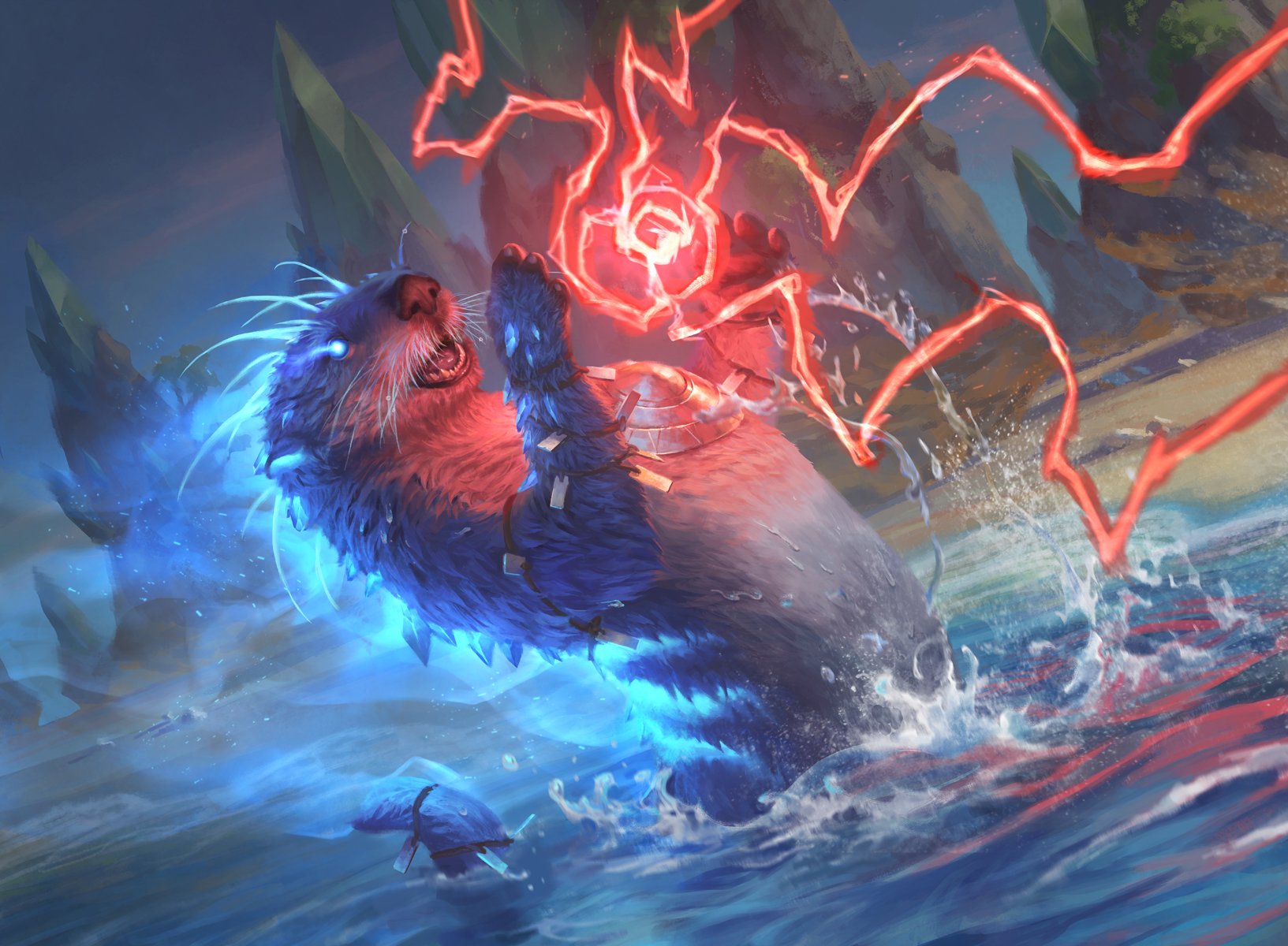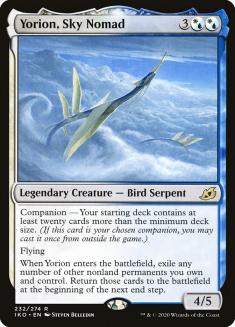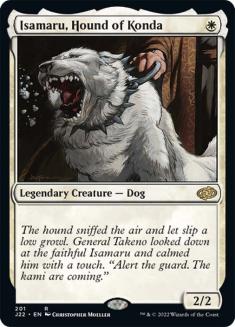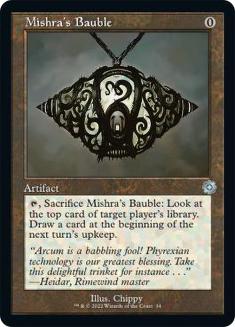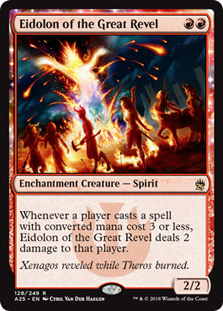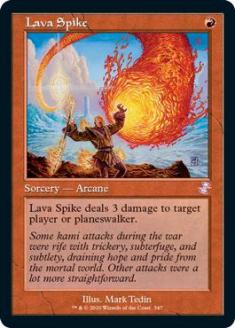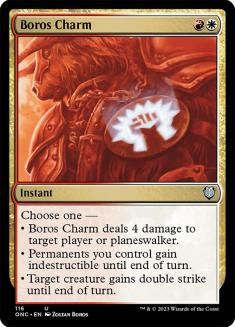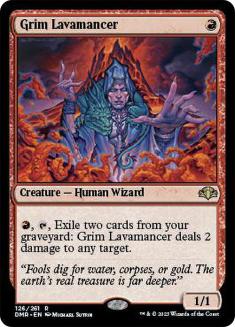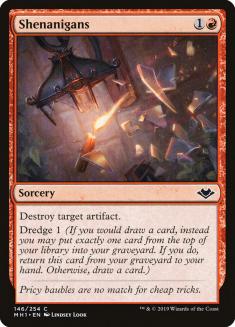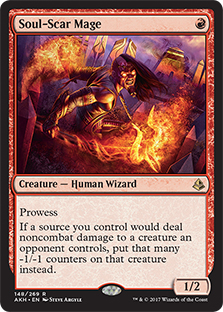Companions are basically all anyone wants to talk about these days.
- “Todd, are companions ruining Magic?”
- “Todd, what are your thoughts on the ubiquitous nature of companions?”
- “Todd, what does ubiquitous mean?”
In today’s article, I will outline my thoughts on companions in Magic, as well as what I consider the best deck in Modern at the moment: Lurrus Burn.
So let’s go step by step and examine companions and their effect on the game and discuss how they could affect Magic for years to come. If you only care about the best deck in Modern, feel free to skip down to the section on Lurrus Burn in Modern.
Comparing to Commander
One thing I keep hearing over and over is that the companions are just turning Magic into Commander instead of each format keeping its own identity. On their face, the companions are literally changing the shape of Magic and it is starting to look a lot like Commander. Some decks across all the formats have been skipping the companions and I just don’t understand why. They’re so good. You get to start with eight flippin’ cards in your hand!
But Commander is also a format that people love and for good reason. Building a deck around an identity leaves you with a good feeling. It gives you a sense of purpose instead of aimlessly fluttering through a format. What will often happen when testing a new deck is that you don’t actually draw the card you’re building your deck around. Because we play 60-card decks and games can go pretty quickly, you could go an entire League without drawing one of your marquee cards more than once or twice. In many matches, you might not draw your best card, even though that’s what you’ve built your deck around.
Commander keeps that from happening because your deck is built around that commander from start to finish. The abilities are usually build-around, and your creature never actually dies. It just goes back to the command zone and becomes harder to cast. That is specifically designed to make sure that people’s decks don’t just “stop working” if the opponents kill or counter your commander. The format is designed for games to last long and for there to be a ton of interaction between multiple opponents.
It’s also pretty damn fun.
Commander is the most popular Magic format for a reason, as it gives new life to a plethora of old cards that might otherwise be forgotten. Also, Commander creates an experience that is usually enjoyable because creatures naturally promote interaction. Companion creatures are the same, in that few of them are combo decks in the traditional sense. Instead, we’re more focused on actually interacting because killing Lurrus of the Dream-Den or destroying all of your opponent’s permanents makes Yorion, Sky Nomad worse.
Having games revolve around spells in hand or permanents that are tough to interact with, like planeswalkers, can lead to some landslide games. In fact, I’d say that more often than not in the last two years, the games I’ve played have felt way more one-sided than in the past. A lot of that is due to creating creatures that don’t die or planeswalkers that produce a snowball effect if left unanswered…on the second turn or third turn. When you constrict the game down to just a handful of turns that matter, it becomes less and less likely that there’s an actual game to be played. That’s why Oko, Thief of Crowns and Teferi, Time Raveler are so frustrating. Even if you kill them, they’ve gained value, and if you don’t kill them immediately they will change the game in an irreparable way that means you can no longer meaningfully interact.
Companions do something similar, but the key difference is that creatures are significantly easier to interact with. If Wizards of the Coast (WotC) went back and gave errata to every single card that can interact with creatures and said they can also interact with planeswalkers, we wouldn’t be having this discussion. It’s become clear that planeswalkers aren’t meant to be weak. They’re meant to take over the game. They’re meant to be the focal point of the game. And the only thing I’m saying is that I’d much prefer if the focal point of the game centered on creatures instead.
Companion does that in a significant way, and with deckbuilding restrictions to boot. In a lot of ways, Lutri, the Spellchaser literally tries to turn your deck into a Commander deck. They just didn’t go far enough and force you to play singleton nonbasic lands! Regardless, the restrictions and “floating” nature of the companions makes it feel a lot like you’re playing Commander when you both have access to these creatures…and I’m actually just okay with that.
The Future of Magic
I’ve played a lot of different card games over the years, and one thing I am definitely a fan of is “familiars.” In essence, companions fill a role in Magic that is present in other games. Whether it’s Heroes, Pets, Magi, or whatever else, they are some piece of utility you always start with, build around, and utilize in every single game. Hearthstone’s heroes are a great example that many people understand and can relate to. Wanting every game to feel both familiar and dynamic is a delicate dance, but one that Magic can certainly lean into if they so choose.
The reason I’m even considering this as a possibility is because the change to companions in Magic have made the games I’ve been playing significantly more enjoyable. It seems we’re leaning toward interaction and longer games as opposed to one-sided affairs that last an eternity. It’s pretty disheartening to sit across the table from Oko, Thief of Crowns and lose for fifteen straight minutes. At the very least, you can kill your opponent’s companion. It’s just a creature.
It feels like every other round you’re battling against Lurrus or Obosh or Yorion, and I’m not even talking about Ikoria Standard! These companions are powerful, but they’re not exactly powerful because of their abilities. The “broken” part of companions isn’t the creature itself, its the mechanic. What if everyone got to start with eight cards? What if instead of focusing on bannings, we considered expansion?
I don’t think it’s feasible to expect WotC to design five or more new deckbuilding constraints whenever a new set is released. I would much prefer a system similar to Commander’s where you choose a starting companion that’s a legendary creature and your deck must be those colors. While some of the older legends might be too powerful for this specifically, you could go through and curate a specific Banned List to manage stuff like Baral, Chief of Compliance. You could even go so far as to just ban certain legendary creatures as companions and still allow them to see play in your deck, even though Commander moved away from that mentality.
The implementation of companions as a regular mainstay in Magic would be something I would very much like to see. The only problem I have with them at the moment is that there aren’t enough. It’s clear that the companion mechanic itself is too powerful because that extra resource is worth so much more than weird deckbuilding constraints. We all know the difference between a starting seven and a mulligan. Companions are just going in the opposite direction. But if everyone has the option to play a companion for their deck, that extra resource allows for fewer games decided by mulligans, and fewer games ended before they begin.
Right now, it seems like everyone is on the Lurrus train in older formats, but I think that’s mostly due to the deckbuilding constraint being relatively tame. The card itself is just another recursion/card advantage engine we know and love/loathe. The card itself in any given deck wouldn’t make you take a second look. It’s arguably worse than Mayhem Devil in Ikoria Standard, and probably a bit worse than a lot of options in Modern or Pioneer.
And that’s the rub. These cards (so far) don’t feel more broken than anything we’ve been able to play with in our decks. But they’re not in our decks. The broken part of companions is the extra card gained and how that extra resource impacts a close game. It doesn’t help that most of these creatures also have some sort of built-in card advantage based on the deckbuilding restriction, which in effect allows you to start with a virtual nine-card hand. Lurrus is potentially more problematic because untapping with it means even more cards, which is hard to quantify in a longer game.
If WotC decided to fundamentally change Magic in order to create gameplay experiences similar to what I’ve been having across every format, I would be okay with it. Games can change, and should change, to better match what the players want or to create better experiences. Maybe companion should be relegated to Standard or just be a special event like Brawl on Arena. Maybe it should be its own format entirely. All I know is that I’ve had a ton of fun brewing new decks and the games have been awesome. It would be a shame if we just chalked this up to “power creep” and banned a bunch of stuff to go back to normal (or whatever passes for normalcy these days).
Companions are a great idea for a card game. Maybe they’re breaking Magic, but I think they could also fundamentally change Magic for the better if done right. At the rate we’re going, every deck in every format will be built around one of ten companions. The mechanic of starting every game with an extra card is just too powerful and enticing, and many of the restrictions are just too easy to get around. That can be solved by making companion more accessible and increasing the variety at which creatures (or cards) can be companions.
What if Isamaru, Hound of Konda could be a companion and it just didn’t have a deckbuilding restriction? What if you could virtually guarantee that your deck “does its thing” every game? Is that really so bad? Isn’t that why we’re playing those decks in the first place? It’s not like we weren’t trying to do exactly that with nearly every deck for the last quarter-century.
Whatever they decide to do, I hope they do it sooner rather than later, and I hope they exhaust the bevy of options at their disposal. Just banning certain cards in older formats feels wrong, and I hope that’s not the conclusion they come to.
Lurrus Burn in Modern
As someone whose primary focus over the last six months has been Pioneer, I’ve certainly had a ton of fun playing Modern with Lurrus in a variety of shells. The ability is so cool, and adding the engine of Lurrus plus Mishra’s Bauble to decks that don’t normally have card selection or card advantage is a big deal. It also promotes playing “fair Magic,” which is a breath of fresh air from the hellscape that is Dimir Inverter and Lotus Breach.
Burn isn’t exactly known as “the good guy,” though. People certainly…feel feelings about the archetype. Personally, I’ve never beaten a Burn deck in my entire life and I don’t plan on starting anytime soon, so mostly I’m just glad I get to join them for a change. Adding Lurrus to Burn gives the deck some staying power, which wasn’t the case before. In the past, Burn could usually get the opponent down to six or less life and then need a little help from the top of their deck. An opponent with a key discard or removal spell could elongate the game somewhat, and potentially steal it if they had enough ways to gain life and counteract the burn spells proper.
What Lurrus does for Burn is give you card selection and card advantage. It’s a free 3/2 that always starts in your hand and can bring back a dead Eidolon of the Great Revel or Goblin Guide. But mostly it just goes for the Mishra’s Bauble to ensure you draw enough burn to finish off your opponent.
That’s one thing I’ve found about Lurrus: it shines in archetypes that aren’t privy to traditional card advantage. And the card advantage here is practical to boot. Monastery Swiftspear triggers on any noncreature spell, which means an early Mishra’s Bauble just cycles while dealing an extra point of damage. In spots where you can’t afford to flood, you can check the top of your deck to see if you should play Arid Mesa or Sacred Foundry as your land for the turn. And with Lurrus, you get a free 3/2 that draws a card when it enters the battlefield. And the best part: the deckbuilding constraint of Lurrus has literally no ramifications. It’s a freebie for the deck. You just get to play Mishra’s Bauble to help it along a bit.
There’s something strange I’ve noticed about playing with Lurrus that has been pretty tough to put into words. I’ve had quite a few exchanges with folks on stream and on Twitter about what types of decks Lurrus feels the best in. For Modern specifically, nothing has felt close to Lurrus Burn, which is basically just an old-school Burn deck that has a built-in card advantage engine. That in and of itself is a pretty powerful statement, since companions aren’t really “supposed” to give an existing deck an alternate method of attack or defense. The deckbuilding constraints are supposed to build new decks entirely.
But just imagine six months ago playing against a Burn opponent except they always start with an eighth card and that eighth card is always Lurrus. That is terrifying, because I was already losing to them a lot due to either Eidolon of the Great Revel or just the sheer volume of burn spells being thrown at my head at such a fast rate. Without dedicated hate, it’s pretty hard to beat the deck, no matter what you’re playing.
What I also noticed is that playing too many card advantage style cards with Lurrus can create a “spinning your wheels” effect, even if you’re technically drawing extra cards. A long time ago, a wise man once said that “Red’s card advantage is killing the opponent. For every card stuck in their hand at the end of the game, that’s how many extra cards you drew.” I still think about that to this day, if only because I lose to red decks with multiple cards in hand regularly.
In a balanced Burn deck, you need to understand that card advantage isn’t everything. Sometimes it’s okay to throw away your creatures or cast a Lightning Bolt to the face on the first turn. Your removal doesn’t have to kill creatures if it’s killing the player. Technically, if your opponent doesn’t die, a Lava Spike doesn’t really do anything. That’s the danger of playing a deck like Burn, because if your entire strategy doesn’t work together for the common goal, you’ll lose. As someone who has played against Burn a lot throughout the years, it feels pretty good when they have to chuck one of those spells at your creature instead of your face. That usually means you’re winning.
But the ability to throw excess burn spells at the face instead of creatures is the gift that Lurrus gives. Your raw resource count, including lands, is much higher than normal. That means throwing an errant Rift Bolt to the domeski doesn’t hurt so much on the ol’ card economy. Playing a Burn deck through one League is actually a great way to learn the lessons of resource management!
What I’ve found in most Lurrus decks is that you don’t really run out of stuff to cast, even if you’re throwing Boros Charm and Lava Spike at their face. You will rarely flood if you play Lurrus, Mishra’s Bauble, and some number of lands that can sacrifice or cycle. And because of Lurrus being a free card, playing an extra land or two in most decks isn’t that much of a sacrifice. In fact, I’d recommend adding one or two lands (or four copies of Mishra’s Bauble) to any deck that plays a companion. That extra card, and guaranteeing the land drops to cast that extra card, is almost like getting a free mulligan. When combined with the London Mulligan, it feels like every draw featuring a Lurrus deck is smooth.
Without further ado, let me introduce you to Lurrus Burn. The original concept came from Mark Gabriele, but this list reflects the changes I’ve made to the archetype from the lessons I’ve learned.
Creatures (12)
Lands (20)
Spells (28)
- 4 Lightning Bolt
- 4 Lava Spike
- 4 Lightning Helix
- 4 Mishra's Bauble
- 4 Rift Bolt
- 4 Boros Charm
- 4 Skewer the Critics
Sideboard

First and foremost, I just want to say that the maindeck feels almost perfect. Outside a few cards that are particularly troublesome, I don’t want to sideboard much at all in any matchup. The only cards that I ever really want to sideboard out are Lava Spike and Boros Charm when I need to be more interactive. Decks that have a lot of creatures often can race you if you don’t draw Eidolon of the Great Revel. Being on the draw is also potentially problematic in some cases, and requires you to throw burn spells at creatures almost immediately.
I’ve considered cutting both Lava Spike and Boros Charm, but I think the cost is too great. The best part about Burn is that, in a pinch, you can turn the corner and just start hucking blasts at the opponent’s face. If you cut Lava Spike and Boros Charm to be more interactive, for example playing maindeck Path to Exile or Burst Lightning (or just playing four Seal of Fire), you start to lose that raw power that gives the deck its fear factor. After all, is there anything more terrifying than your opponent casting Boros Charm when you were expecting a three-damage spell? Sometimes, that one point can make all the difference.
Like I said, being more interactive isn’t always going to be a good thing either. If your opponent is set up with Unearth and Kolaghan’s Command and the like, winning a longer game isn’t feasible. We’re an aggro deck with a ton of negative card economy. If you try to play their game, you’ll lose. That’s why I suggest going super-light or super-heavy on Lurrus. If you go somewhere in the middle, you won’t be able to beat either side. As I’ve said, Lurrus gives you the luxury of card economy in a deck that didn’t ever have much, so leveraging those spells to win the game is desirable.
If you’re a fan of Burn, I highly recommend this deck. The sideboard will always be a work in progress, but I’m currently high on Abrade as a versatile answer and Kor Firewalker as a kick in the teeth for the mirror. I also think Pyrite Spellbomb should get the nod over Seal of Fire because Kor Firewalker is such a pain in the butt! As for Searing Blaze, well, you can probably figure that one out.
While this list is solid, I still have some experimentation left on the docket. For example:
I would like to try out Grim Lavamancer at some point. Its ability is growing more and more relevant with Lurrus encouraging people to play more creatures (and more creature removal). Having a bit of added threat density is nice.
You will need to kill multiple copies of Chalice of the Void on occasion, so having one of these over one Abrade might be okay.
Ryan Overturf wrote an article about Lurrus Prowess on Monday and I think he’s on to something. You would do well to read his words on the archetype. Soul-Scar Mage would essentially move us into the Prowess camp, which I don’t know is actually a bad thing. I do know that Lurrus and Bauble aren’t exactly friendly with Eidolon of the Great Revel. It might be time to go lower to the ground, but Eidolon has performed well so far.
There’s also an argument to splash a different color. We aren’t exactly going white for a lot of stuff. If Boros Charm ever gets cut from the deck, chances are that we should be playing black instead of white to support Lurrus. Maybe that means more Bump in the Night and less Seal of Fire, but it all depends on how you want to leverage those extra cards from Lurrus.
I’m a huge fan of this archetype at the moment, and I can’t wait to do more work figuring out the best configuration. There are so many nuances and avenues to explore. Who knew the Magic world could open up so much if they just let us all start with eight cards in hand! People are really out here winning tournaments with 80 cards in their deck. Can you imagine?

